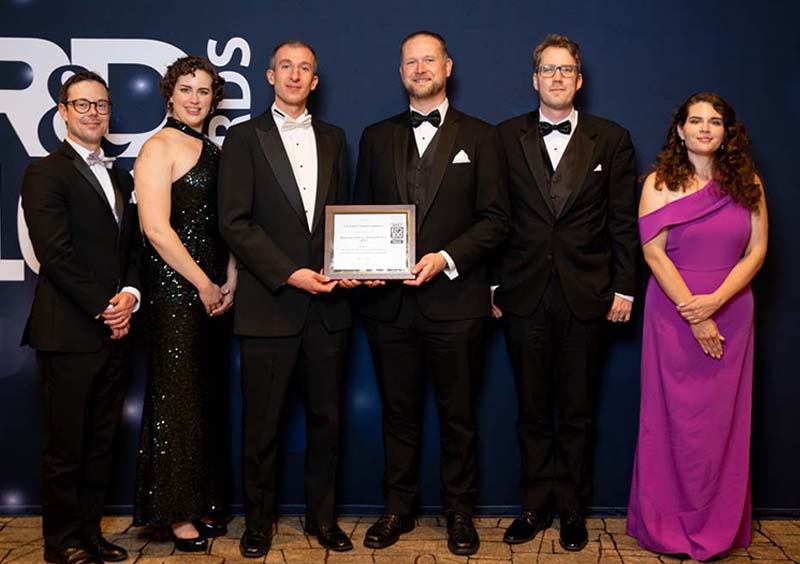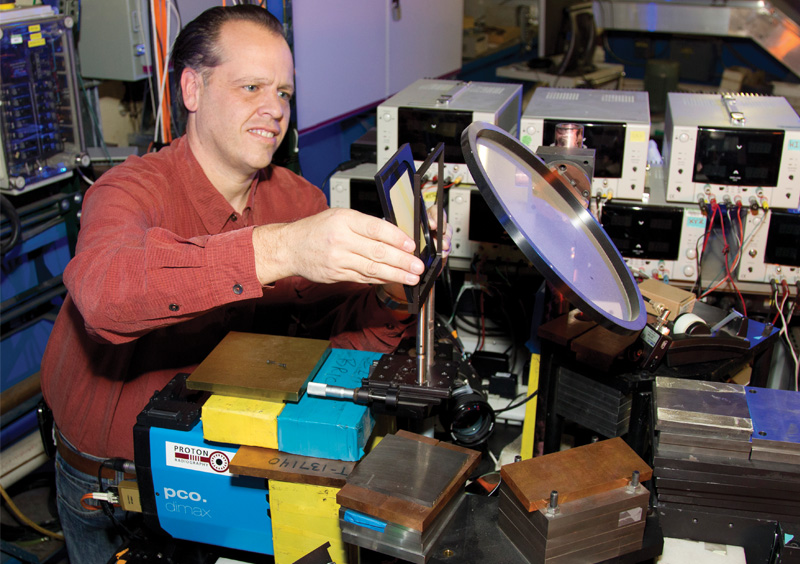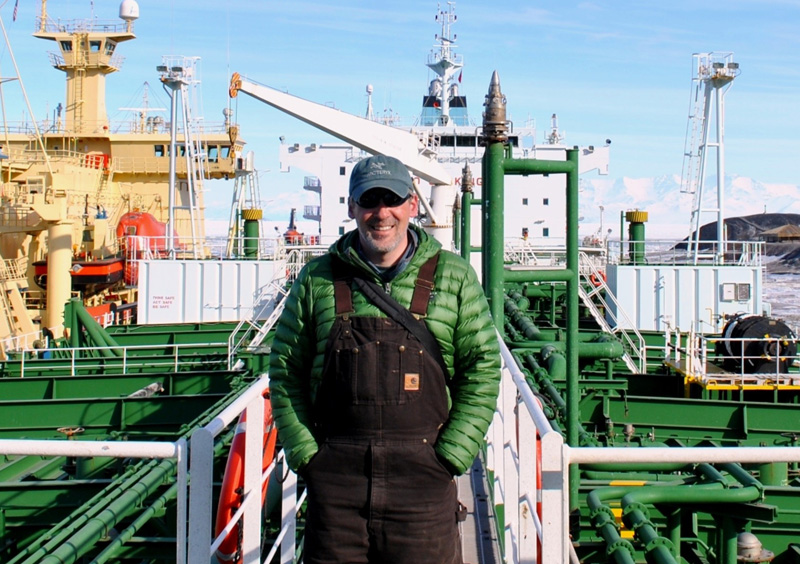When Ed Anderson began his career as a young construction field engineer 41 years ago, he never dreamed his path would take him around the world and help him evolve into one of the most trusted leaders and respected operations experts in the Department of Energy complex.
“When I started out all those years ago, I knew I wanted to be part of something really big and meaningful,” Anderson said. “At the time, I didn’t fully realize how my job in construction engineering was tied to how our country ensures we have the best scientists and researchers collaborating for national security.”
It didn’t take long for Anderson to understand the connection between operations and scientific mission-related endeavors throughout the DOE and Department of Defense, the NNSA and industry partners. In fact, it inspired him to focus on making sure that these agencies and their contractors have the best operations teams, processes, procedures and leaders as possible, all in the name of national and nuclear security.
A career built on trust
Humble to his core, Anderson shies away from listing the numerous accomplishments and contributions he’s made throughout his career. Instead, he shares stories about the relationships he’s built and the challenges he’s tackled, which have naturally led to the creation of strong, effective operations teams that deliver on their commitments.
“I firmly believe that people perform at their highest potential when they feel trusted, supported and safe,” Anderson said. “For me, that means I lead by example and always do the right thing, especially when it’s hard. I reach out to employees often. I want to hear them; I want to know them. Eventually, they see that I really do care about them and trust them, and then everything just takes off in the best way.”
‘Loudest chick in the nest’
One of Anderson’s favorite trust-building methods is what he calls the “loudest chick in the nest.” In this three-phased approach, Anderson approaches the most vocal employee in the room or on the team, shares that he’s observed they have much to say and invites them to meet one on one to tackle the issue together. The caveat: The “loudest chick” also has to bring a solution to the meeting with Anderson.
The second phase is to invite that same employee to go back to their team and gather additional input from colleagues. The “loudest chick” then brings that information back to Anderson for more collaborative problem solving.
Finally, the third phase is to empower the employee to solve problems that arise in their group or team on their own, then come back to Anderson and tell him how they solved it.
“This process is really effective,” Anderson said. “In fact, after just two years as a COO at Idaho (National Laboratory), we had the best safety statistics the lab had seen in facilities and operations. I credit the trust building and relationships I developed with my employees for that turnaround.”

More than keeping the lights on
To describe the operations functions at a national laboratory as “complex” is an understatement. In fact, the size of Los Alamos National Lab — around 18,000 employees, approximately 1,000 structures and close to 40 or so square miles — makes it more akin to a small, complex town than many other businesses, organizations or government agencies in the nation. Add to this the nature of the vast research and development activities that are at the heart of the Lab, and the operations environment becomes even more challenging.
Prior to his current role as the interim executive officer for the deputy Lab director for Operations, Anderson served as the chief operating officer for the Lab’s facilities and operations directorate, where he oversaw the stewardship of numerous assets and services and led approximately 3,000 employees who carry out that important work. In both roles, he ensures that the Lab can operate for decades into the future by strategically planning infrastructure growth to continually enable the Lab’s missions.
“I consider my job to be making sure the Lab can fulfill its duty to serve the nation by applying world-class science and technology to current and emerging national and global security challenges,” Anderson said. “None of the important work we do here can happen without facilities and infrastructure. And we have to be safe — always. No matter if we’re working in a high-hazard facility, in a bio lab or in an office, we have to make sure our people are safe.”
No challenge too intimidating
Los Alamos isn’t the first place where Anderson navigated complex and high-stakes work environments. During the eight years he spent as the deputy director and COO for the facilities and site services division at Idaho National Laboratory, he helped transform the lab into a global nuclear energy, fuel-cycle research and cyber-physical security innovations leader. One of his biggest accomplishments there was pioneering support service solutions — in the form of leading a two-year project to transform employee safety and performance culture — to improve and enhance the Lab’s ability to deliver its mission initiatives.
“In two years, we changed things for the better in terms of employee safety and performance,” Anderson said. “We had the best safety stats in facilities and operations the lab had seen. I’m really proud to have been a part of that.”
The transformation did more than improve employee safety and performance; it also improved overall operations. Because employees felt safe and trusted, this enhanced work environment led to schedules being met more often, work processes being streamlined and work accomplished within or under budget. In short, Anderson helped make Idaho National Lab more efficient, more effective and more able to accomplish its important missions.

Disciplined processes for the win
One of the main reasons for Idaho’s success was due to the creation and implementation of distinct, detailed work processes for employees to follow. Anderson led that charge by methodically analyzing how facilities and maintenance teams were operating, engaging those employees in conversations about what improvements could and should be made, and then implementing those changes and making sure everyone understood the newly outlined processes. The result was a consistent framework that was easy to follow and ensured a safe and secure work environment throughout the lab.
“People who have worked in high-hazard facilities or in the military know all about disciplined operations and conduct of operations,” Anderson said. “But not all scientists, researchers, craft workers and support staff teams are familiar with these concepts. When we made that change at Idaho (National Lab), it made a huge impact in how we got things done, in the nuclear arena and beyond.”
Global reach and impact
Anderson’s contributions stretch well beyond our nation’s borders. He has shared his safety, efficiency and operations expertise with international partners in both the Republic of Georgia and Qatar, when he led the development of successful international laboratory operations programs for national research centers in those countries.
The first, the Richard Lugar Center for Public Health Research, residing under the Republic of Georgia Ministry of Health, is a Level 3 Bioscience facility constructed under a joint U.S.-Georgia project for the U.S. Defense Threat Reduction Agency (DTRA). This was the first DTRA BSL-3 laboratory to be successfully certified by the U.S Centers for Disease Control and Prevention in Eastern Europe.

The cherry on top for this project? The Richard Lugar Center team achieved a Performance Evaluation Measurement Plan score of 99 and won the Battelle Team Achievement Award.
The other notable international project Anderson led was as the manager of research and development operations support for the Qatar Environment and Energy Research Institute. The Qatari agency engaged Battelle to assist with the development of all operational elements necessary to conduct world-class research operations in the first Qatar National Research and Development Complex, and Battelle asked Anderson to lead those operations.
“I absolutely loved my time abroad,” Anderson said. “I think everyone needs to go overseas to gain perspective and a deeper understanding of the world. I made some amazing friends when I was there, and I also got to travel to 16 other countries to hike and explore!”
Leading and collaborating, with safety in front
Back home in the States, Anderson continues to focus on leading teams to safe and reliable operational excellence through trust building and collaboration.
“Safety is not a box to check; it’s a mindset embedded in every action and decision,” Anderson said. “Efficiency is earned through disciplined processes, and trust is the foundation for lasting performance. I carry these principles into my national roles, collaborating to shape the future of Laboratory operations.”
Some of these roles at Los Alamos include chairing the Laboratory Operations Committee and the Institutional Management Review Board. Anderson also served as the chairman of the National Renewable Energy Laboratory (NREL) Operations Committee and as a member of the NREL Board of Managers.
Battelle has also benefited from Anderson’s expertise, as he’s served as a member of the Operations Committee for the Battelle National Biodefense Institute, as a member of the agency’s Facilities and Operations Community of Practice and as a mentor in the chief financial officer’s Early Career Development program.

Giving back and family time
Anderson relishes the time he spends with his family and community. He grew up in Idaho and experienced all the state has to offer, including mountaineering, skiing, whitewater kayaking, hunting and hiking. As a hobby mountaineer, he’s climbed in Russia, the Republic of Georgia, Alaska, Mexico, Canada and all of the western states. Each year he returns “home” to hike in Wyoming’s Teton range.
Anderson owns property with his father in the Idaho Primitive Area on the Salmon River, where the elder Anderson has lived for 30 years. “We get to enjoy nature up close when we visit my dad,” Anderson said, “including occasional bear visits!”
Anderson played and coached hockey and soccer his entire life, and he spent many summers teaching kids with special needs how to climb at a camp in Swan Valley, Idaho. Anderson and his wife now enjoy watching their 10 grandchildren grow and experience their own lives, all while looking forward to more adventures Anderson has brewing.

LA-UR-25-25548






